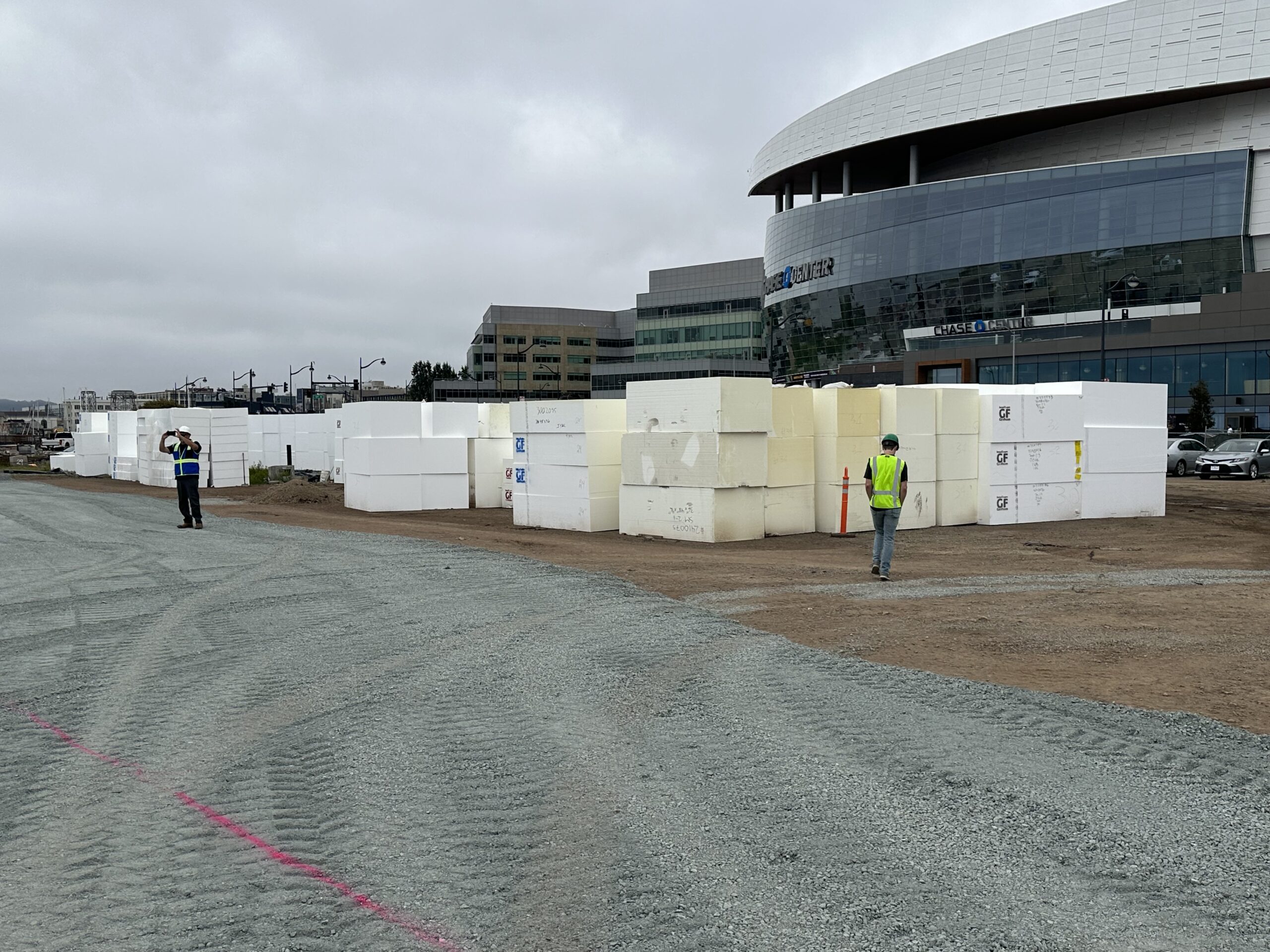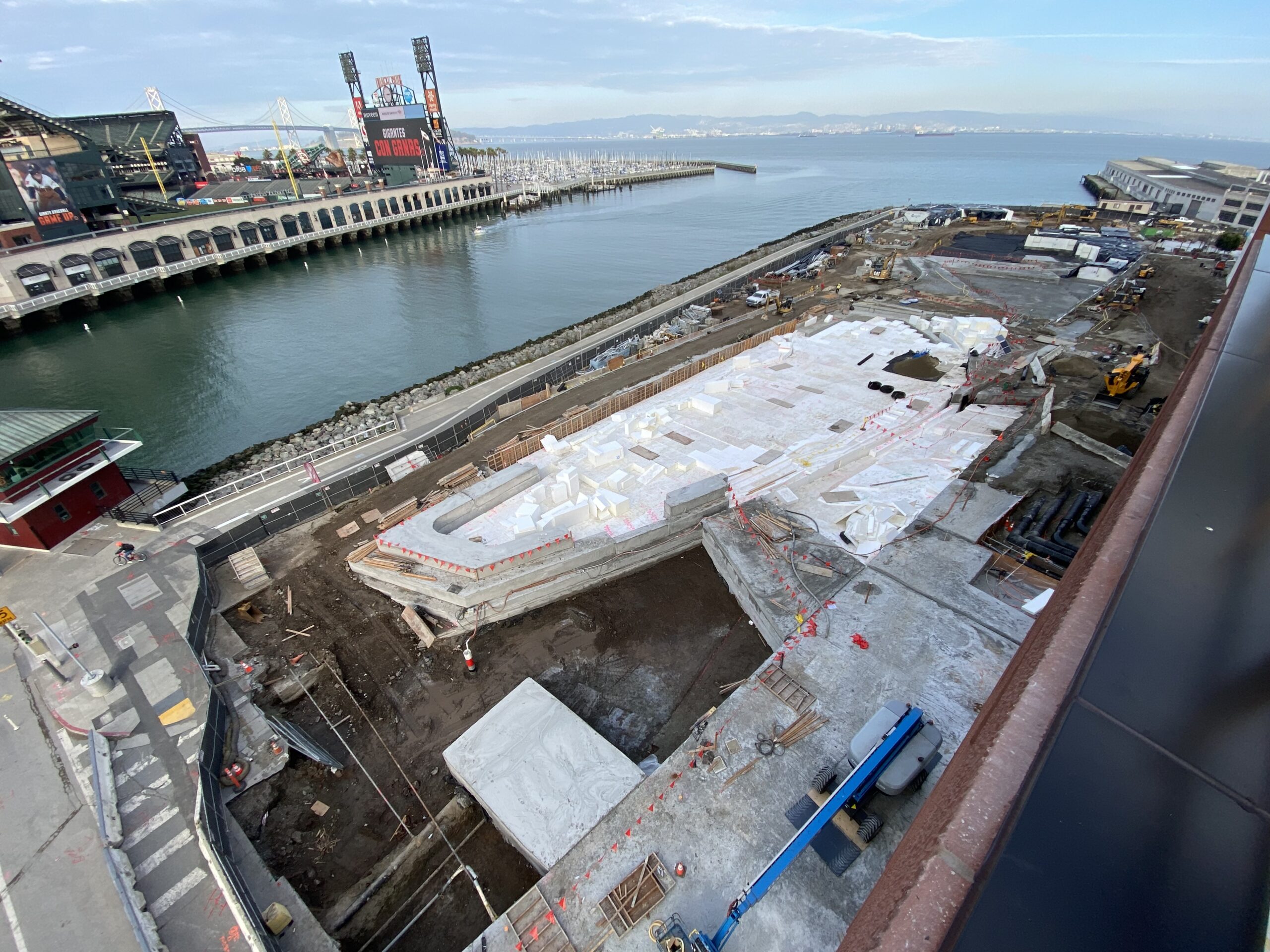It’s the beginning of a new year! If you’re not looking ahead at the latest trends in construction you should be! Keeping up-to-date with the latest trends is critical if you want to improve your business strategy. Advances in tech trends and overall changes in the ever-evolving construction industry are coming fast and furious. You’ll need to stay informed if you want to remain competitive and not fall behind in 2020.
There are several reasons for contractors to be cautiously optimistic about the upcoming year. Interest rates and general unemployment remain low. And it looks like municipal and state funding levels and bond activity are geared up to support construction spending. For example, there’s ongoing demand for highway construction and road improvements, general infrastructure improvements and water system upgrades. All this bodes well for construction companies.
But to maximize your business strategy you’ll need to be prepared. And one way to do that is to review the longer-lasting and newer, emerging trends and adopt those that make sense for your company. Here are eight to look at.
#1. Continuing emphasis on sustainability and green building practices
The construction industry accounts for about 20 percent of global emissions and there’s a push to bring that percentage even lower. The continuing trend toward LEED certification led to an increase in the number of projects incorporating green building practices. Throughout 2020 expect building regulations to become even stricter regarding sustainable and green building. Designs will need to provide the maximum in energy efficiency and use of recycled and sustainable building materials while keeping carbon emissions and material waste to a minimum, and to improve the longevity of the building.
Look for construction designs in 2020 to incorporate lots of natural light to reduce electricity costs and to be well-insulated to keep heating and air conditioning costs down. Capturing and reusing water within the building is another sustainable strategy, as is incorporating recycled materials in construction projects. One new advancement in building materials is energy-efficient bricks produced using 1 percent recycled cigarette butts. When these bricks are used, for a project not only is the negative impact on the environment reduced, but production costs are reduced.
#2. Increased reliance on modular and prefabricated methods of construction
In recent years, modular or prefabricated methods of construction have become more prominent. Why? First of all, the pieces are standardized and easy to install, which means less labor is needed. And since they are built under factory conditions rather than on the jobsite, they are typically higher quality. Perhaps the most important benefit they offer, however, is speed. The pieces can be assembled quickly at the jobsite—sometimes significantly faster than if they were built onsite. And since they are factory-built, the project isn’t hindered by unfavorable weather conditions and the lost working hours that accompany them. In addition, leftover materials can be immediately recycled at the factory, and this method of construction has a lower impact on the surrounding area. The modular construction approach to building is best suited to repetitive structures and appropriate building projects with tight deadlines.
Modular Construction Market predicts modular construction will grow at a projected annual growth rate of 6.9 percent, with a value of $157 billion by 2023. That makes it one of the hottest trends to watch.
#3. Declining labor force
The labor shortage is an ongoing trend construction companies will have to contend with—at least in the short term. Finding skilled workers or younger workers willing to learn the craft will continue to be a challenge. U.S. Census data showed that the number of workers age 24 years or younger entering the construction industry decreased by 30 percent between 2005 and 2016. And that decline doesn’t appear to be reversing. Meanwhile, construction workers already in the workforce are aging. The average age of a construction worker today is 42 years old (one year older than workers in the general labor force). The result is that construction production has slowed and businesses can’t keep up with demand.
There is some relief in sight, however. Currently, women represent slightly less than 10 percent of construction workers in the field, but by 2020, women are projected to account for 25 percent of the construction workforce. And businesses, secondary education institutions and trade schools have ramped up training in the crafts to promote an increase in skilled construction workers. In addition, construction automation solutions such as robots and exoskeletons and more reliance on streamlined, modular or prefabricated building methods help construction companies meet project deadlines with fewer workers.
#4. The rise of the robots
The construction industry’s diminishing labor force has led to an increase in use of robots, or automated machines. A report by World Economic Forum has even predicted that 2020 could be considered “the year of the robot” in the construction industry! In construction, robots are being used for everything from laying bricks to laying roads, to the demolition of concrete structures. In fact, demolition robots are predicted to soon become mainstream.
Robots can increase safety at the construction site, improve construction times and productivity and perhaps even produce a better quality finished product. They are best used for repetitive projects in a controlled environment, so the jobsite can be challenging and not all jobsites are candidates for robotic automation. When appropriate, they can complete more mundane tasks allowing your skilled workers to focus on more strategic tasks.
One new advancement to watch is 3D printing robots. Provide them with a set of preprogrammed instructions, and they can print a structurally safe building or bridge. This is considered one of the most promising automation technologies for the construction industry and a trend to watch in 2020!
#5. Increased use of exoskeletons
Exoskeletons are used to lighten workers’ physical workloads, such as lifting heavy items. This is important because, according to the Centers for Disease Control and Prevention, musculoskeletal disorders cost employers $1,685 per employee every year and $225.8 billion annually nationwide. And a 2019 OSHA report states that musculoskeletal conditions account for one-third of all worker injuries and illnesses. Business that provide exoskeletons for workers can reduce their healthcare costs while improving productivity.
Previous models have been heavy and difficult to maneuver, but the newest generation of exoskeletons are softer, more lightweight and easier to maneuver. They are also
controlled via A.I., which makes them smarter. For example, Construction Robotics Semi-Automatix Mason (SAM) reduces lifting by 80 percent and boosts productivity by three to five times. It can also move heavy pallets.
All these advances mean exoskeletons will be one of the trends to watch in 2020.
#6. Growth in popularity for Building Information Modeling (BIM)
Building Information Modeling (BIM) uses 3D modeling to create and manage complex information on a construction project from inception to completion. Computer-generated images help architects and contractors visualize the construction process and can even reduce the long-term costs of operating/maintaining the building. BIM can accurately pinpoint how much building material will be needed, how well it will hold up over time—and even run simulations to determine which options are best and if the plan will be successful as intended. Since all this is done upfront before the project begins, huge mistakes can be avoided, saving time and money.
Data can include contract and specification properties, personnel, programming, quantities, costs, spaces and more. BIM is already popular with architects and engineers and its popularity is bound to grow in 2020 due to the integration of Virtual Reality (VR) or Augmented Reality (AR).
#7. Acceptance of drones or unmanned aerial vehicles (UAVs)
Usage of drones in the construction industry has grown by a whopping 239 percent in the past year. That’s more growth than in any other industry. Advances in drone technology enable them to provide more precise and detailed information with improved aerial maneuverability. This trend is anticipated to continue in the future.
Equipped with artificial intelligence (AI), photo and/or video cameras, and other specialized electronics, drones are a big plus on the jobsite. They can access remote locations, survey sites, collect data, capture project progress and inspect the jobsite to ensure it is safe for workers. All this contributes to increased safety, speed, accuracy, efficiency and productivity for the project. And increased data can help contractors provide more accurate budgets and timelines, further streamlining the construction process.
While still a high-ticket item, drones gather information in a more cost-effective way. Increased demand for drones in 2020 will likely bring the price down.
#8. More advanced and enhanced safety equipment
Safety is always one of the top priorities for construction companies. But despite safety precautions, the National Safety Council still cites the construction industry with the highest number of fatalities, all of which theoretically could have been preventable.
One new advancement designed to assist in keeping workers safe is the incorporation of connectivity technology in safety equipment. For example, work boots, pants and vests can integrate GPS, Wi-Fi or radio frequency identification (RFID) to track workers and notify the management team when a worker has fallen. Tracking technology can also be used in other ways. For example, Cat Detect for Personnel from Caterpillar uses RFID tags in hard hats or safety vests to communicate workers’ locations with equipment operators, thus helping to keep workers safe.
There’s also new safety items for construction workers laboring in the sun or working under heated conditions. Moisture-wicking clothes and cooling vests can keep these workers from overheating and safely keep them on the job for longer periods of time.







